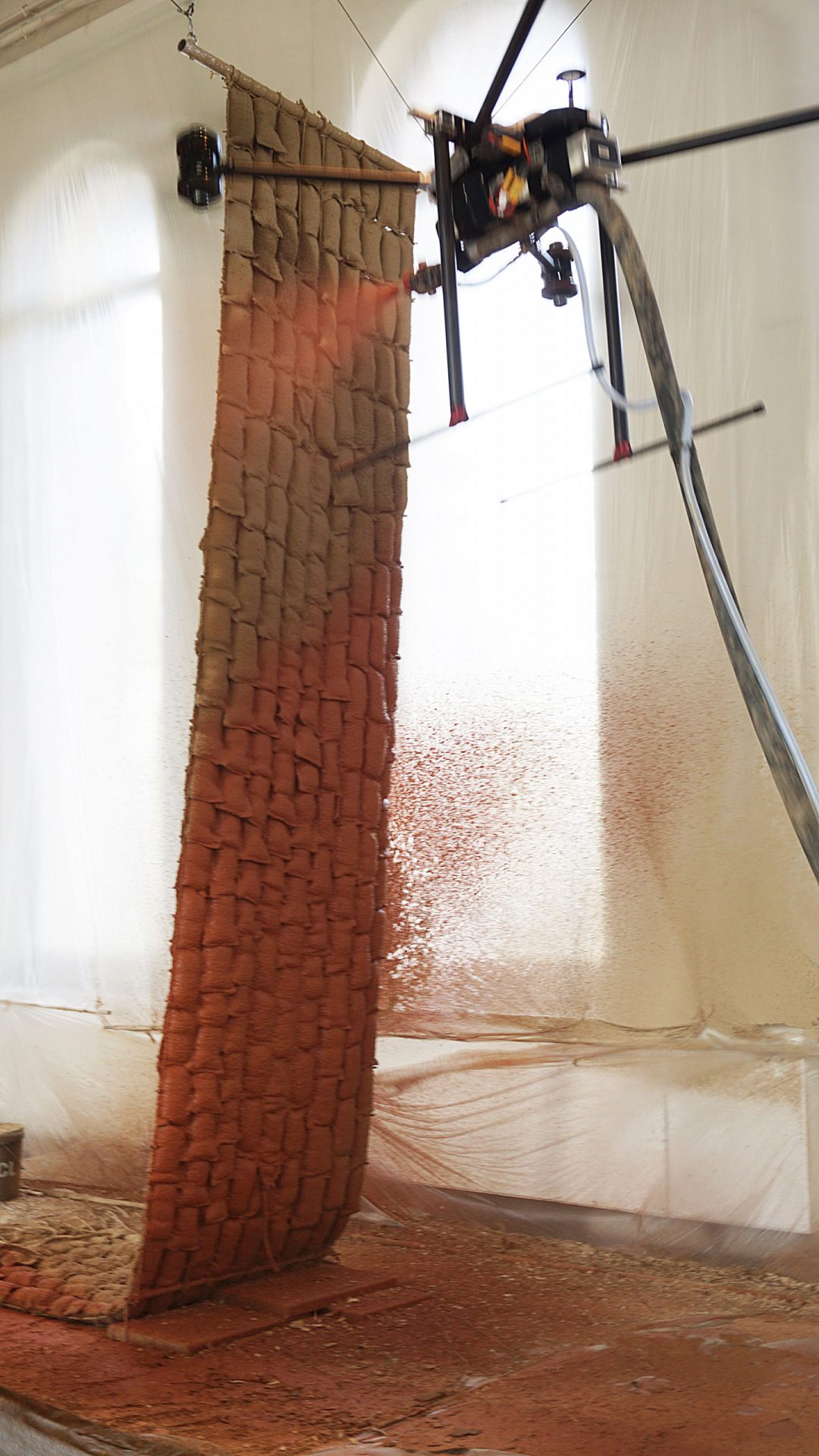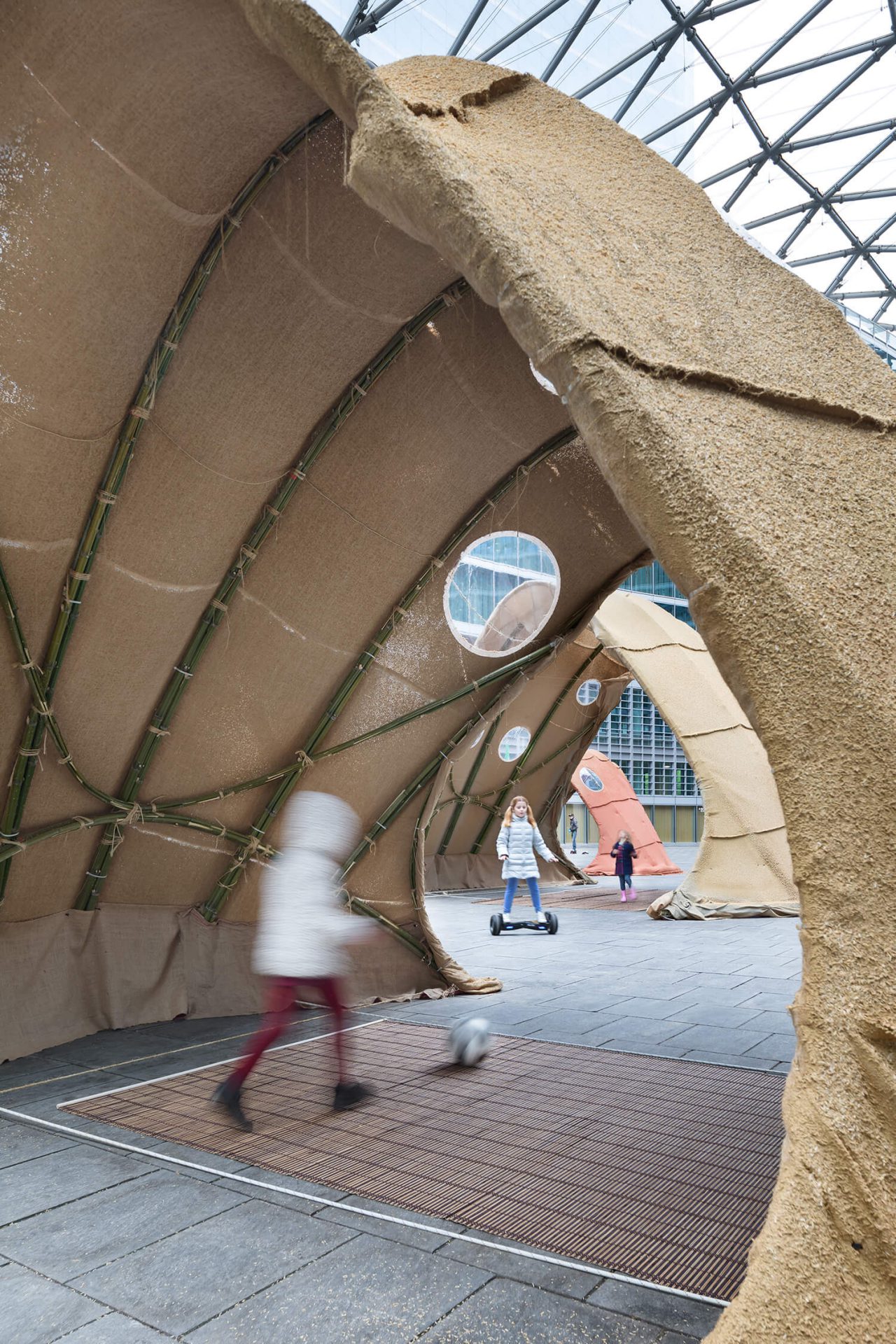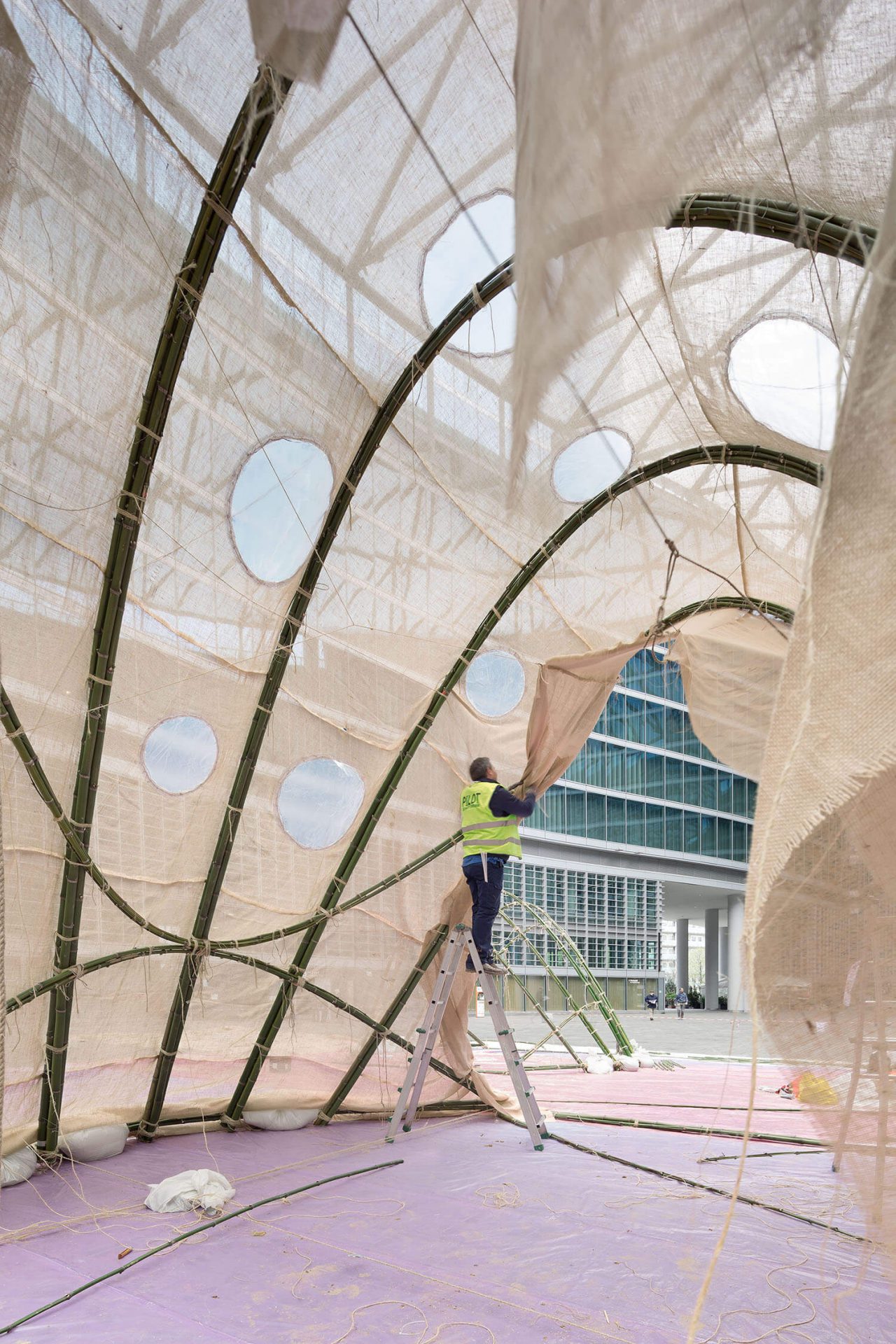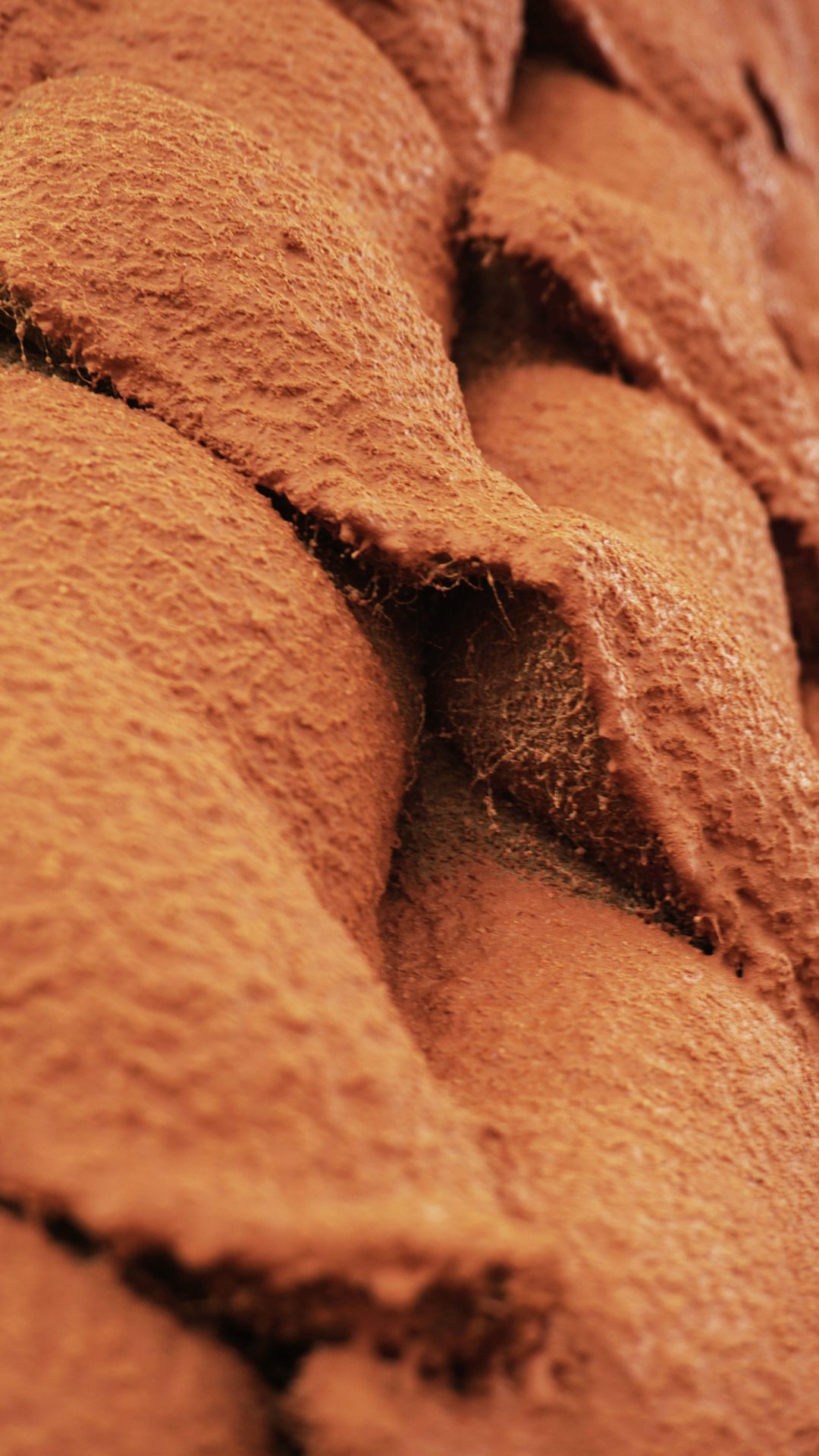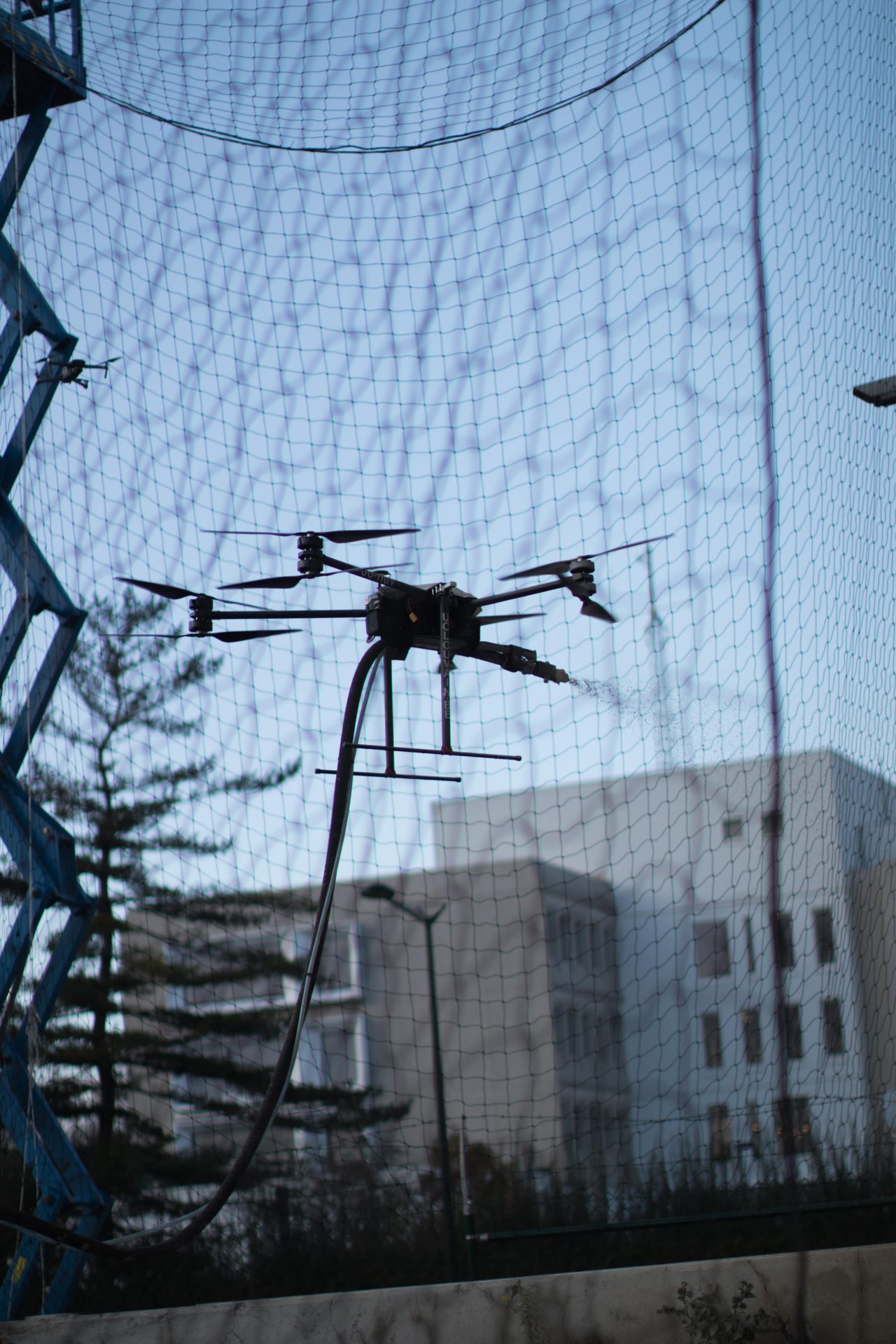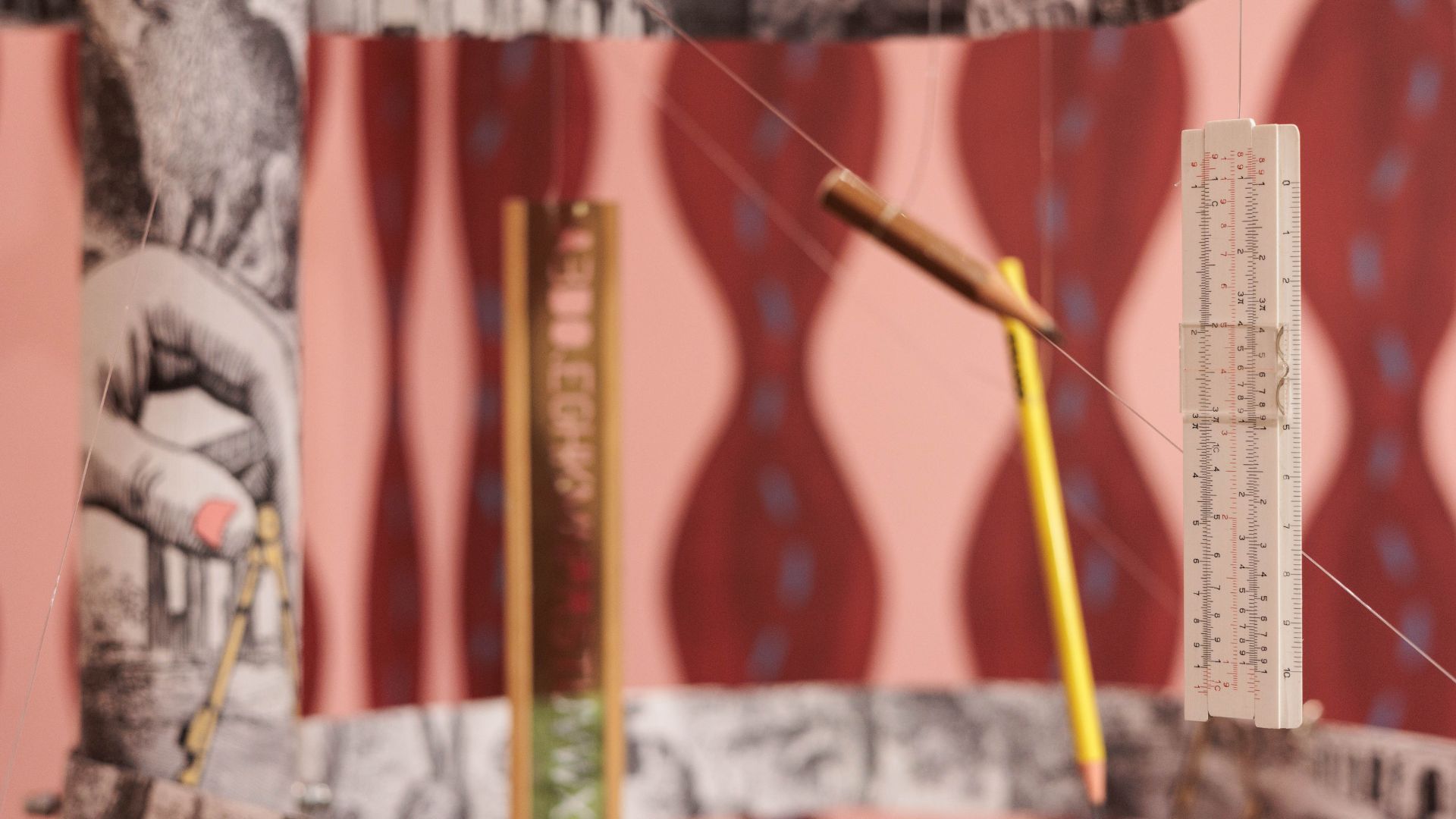Drones as a construction tool with MuDD Architects
Known for combining drone technology with raw and primitive materials and construction techniques, MuDD Architects hold a polar approach to architecture, developing a singular contemporary primitivism aesthetic
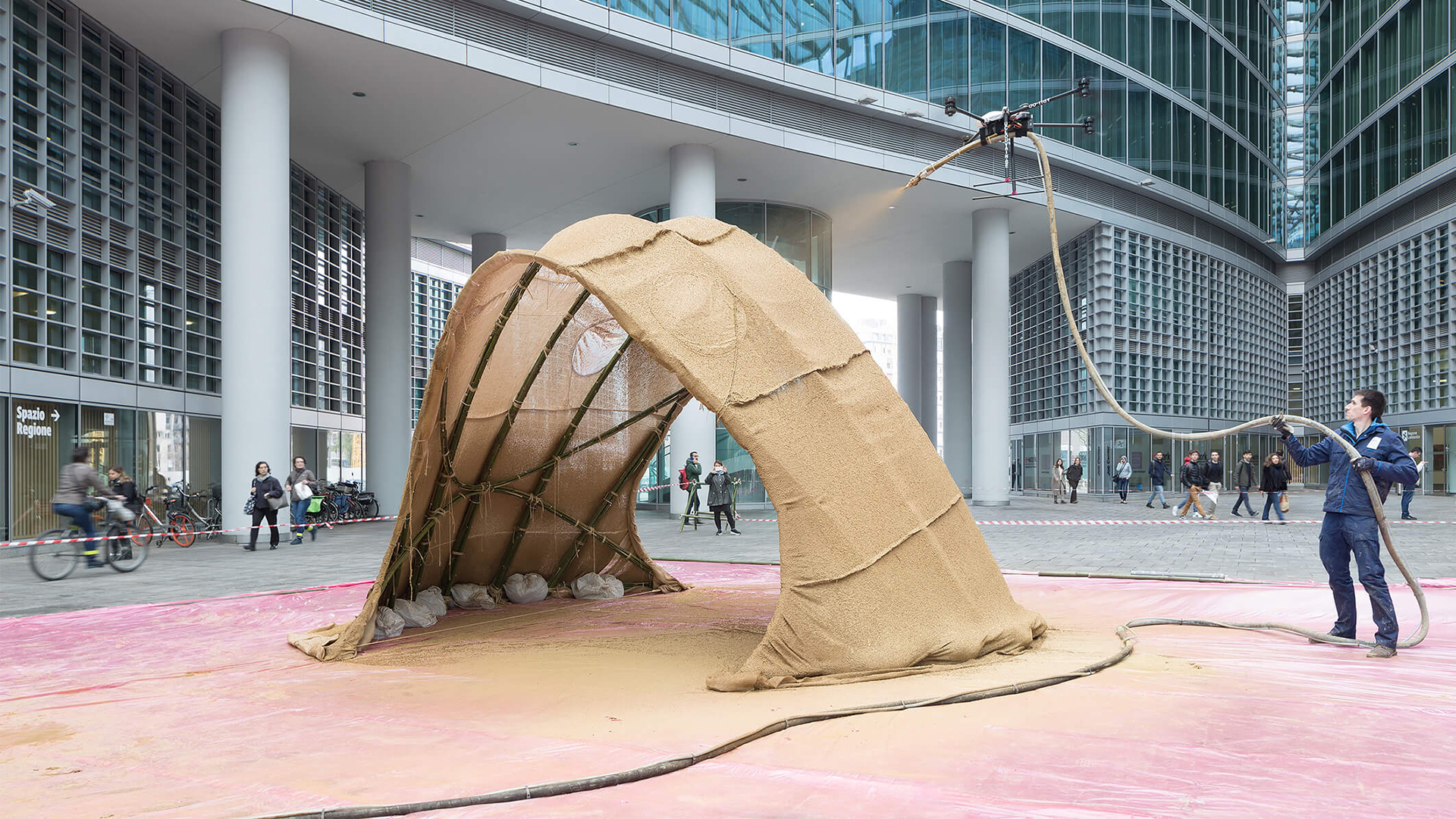
Having established a humanitarian attitude toward their projects, MuDD Architects takes each project as a possible solution for low budget housing or even emergency shelters. DesignWanted interviewed Stéphanie Chaltiel, one of the founding members of MuDD, to find more about their works and vision.

What is MuDD Architects and who is behind it?
Stéphanie Chaltiel:
“MuDD is an architectural company and research think tank focused on using cutting edge technology combined with raw local materials to deliver fast and cheap constructions in a variety of contexts and particularly focused on housing innovative systems.
The resulting constructions or processes of construction tend to provoke contradictory opinions within the public! We are also passionate about the social impact of new aesthetics and forms of architectural envelopes.
The marriage between robotics, including drones, with highly tactile matter, such as clay, engenders edifications at the cross between vernacular and futuristic scenarios, which the main aim is to seek human comfort in a variety of rural or urban contexts.”

I founded MuDD Architects with Maite Bravo, Fabio Gatti and Shameel Muhammed less than a year ago and the company now counts 10 professionals. The main offices are in Barcelona and Dubai. My background includes emergency housing work in Mexico, building with local people and making the most of what could be found on-site, trying to always provide an alternative to prefab concrete blocks and corrugated metals.
Some of these aspects have helped to shape what MuDD Architects is today together with my initial research funded by a European Marie Curie grant on the use of drones in architecture. MuDD stands for MuD and Digital that was initiated when I was running a summer school for the Architectural Association in France working with members from CRAterre Unesco between 2012 and 2016.
Patrice Doat and Wilfredo Carazas who are world earth architecture experts have played a very important role in the development of MuDD.”

Why MuDD Architects, why sustainable architecture?
Stéphanie Chaltiel:
“All MuDD Architects’ members are fiercely dedicated to developing systems using immediately available and easily hackable technology combined with carefully formulated raw materials such as clay, bamboo, lava rocks, shells powder, horsehair, human hair amongst many others that we are finding and analyzing on-site.
The idea is to ease the most laborious tasks and leave more money and time for quality crafts on-site, resulting in new kinds of constructions. In the drone spray projects that we showcased during Milan Design Week or at London Design Festival, the construction phase is so quick that many saw these techniques as a good match for emergency situations where light tents could be coated by drone spray and transformed into robust habitats.”

The idea we would like to pass is that emergency or affordable does not mean low quality. On the contrary, we do have the tools and materials available to build quality housing even with very tight budgets and non-qualified people on site.
Human actions and interactions, material formulation and digital tools need to be combined in a certain way so that we can offer some improvement to the current available construction methods that seem to be stuck in the past.
Our first built prototypes ‘building with drones and earth’, to cite Domus‘ article title from 2018 brought a lot of demand towards us for both innovative facades and emergency housing. We really didn’t expect so much exposure and awards from the first constructions we did with this technique which encouraged us to push now much further.
Pushing further for us means pushing the technology further but also improving our understanding of local needs per project by doing fieldwork.”

How do you choose the type of client or project to work on?
Stéphanie Chaltiel:
“We do consider any project no matter how small as a great opportunity to put in practice the tools or the materials we are passionate about. For example, we are doing a series of rural houses refurbishment in the Catalan hills where we are using local raw clay coatings with its natural coloring.
We are also using natural insulation materials such as straw and cork in grains which result in long-time savings for the clients in terms of passive cooling and passive heating. In addition, we are working on a translucent treehouse for which a teaming up with a designer from Denmark to use gorgeous semi-opaque panels made of seaweed.”

There’s an undeniable playful aspect in both how we work and what we deliver. We are always looking for projects and clients who are willing to take a certain level of risk as what we are offering is not available on a commercial sleek brochure.”
What is one aspect of your job that is difficult, tiring and little known, but definitely crucial to your practice?
Stéphanie Chaltiel:
“Any innovative practice will always get a lot of criticism and it is hard to sometimes progress blindly by bringing the technique before there’s even a clear demand yet. I like to cite the car manufacturer Ford: ‘If I had asked my customers what they wanted they would have said a faster horse’ – I feel it’s the same with MuDD Architects and the drone spray technique when people tell us to use a taller ladder instead of the technology we are developing for large scale architectural envelopes.
Criticism, however, is, of course, healthy and it’s important to read people’s comments on social media to better understand our world.”
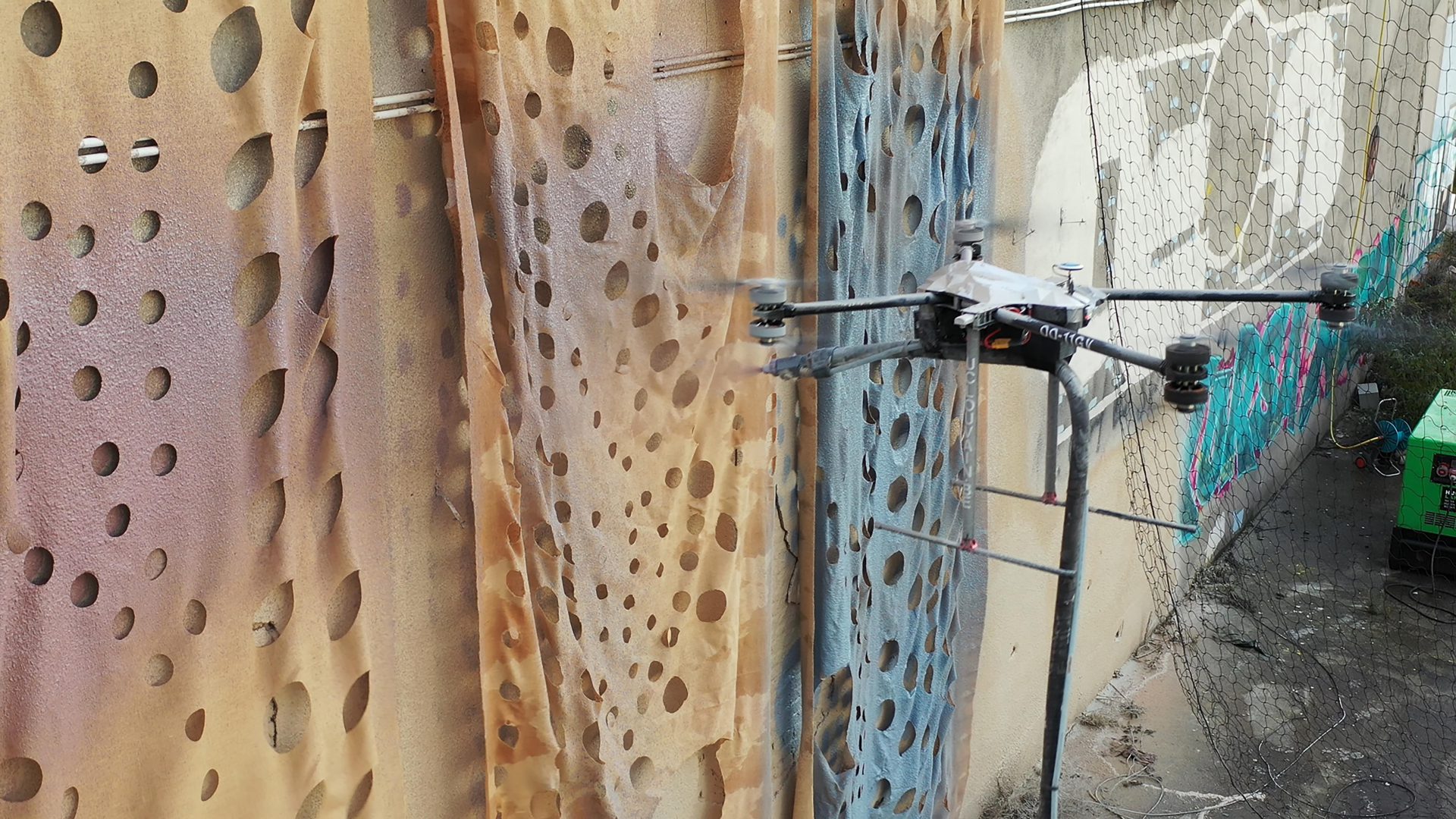
The most difficult aspects of our job happen when we deliver installations which are in themselves both tech and physical performances. Terramia in Milan or Mud Shell in London was very high-pressure times for us as we are physically building ourselves with techniques we don’t fully control yet and the structures must be completed in 5 days maximum.
The constructions involved a highly multi-disciplinary team where everyone is crucial on-site, so until it’s built we are never sure if the project will actually happen within our tight budgets and deadlines.
For Mud Shell London we were supposed to work with 15 students from the AA to build the structure. One week before the start of the construction, they pulled out for insurance reasons, and we ended up building everything ourselves including the prefabricated elements in a tiny Airbnb flat.”

What are the main trends & future directions within sustainable architecture and what do you think of them?
Stéphanie Chaltiel:
“I feel that we live in rather confusing times regarding the definition of what sustainable is. We might use raw low emissions materials but if we need to transport them from far, we’ve missed the sustainable challenge already. If we use bioplastic but join the parts with toxic glue, we are not really helping the crisis either. We could even consider that not using local architects for a project is not sustainable.”
I also remember my first projects in French Guyana in an Amerindian village called Awala Yalimapo in the identity crisis. Our role was to come up with proposals for houses that promote local culture.

French authorities were putting together new rules to protect a natural park in that same village. Due to new French laws, inhabitants couldn’t use local resources such as turtle eggs or palm leaves anymore for building the roofs. In reality that was clear that it was not the 2000 habitants population that were putting nature at risk but rather the multinationals setting up their companies there.
So it seems that sustainability needs to be really thought of as a case per case methodology. A methodology that reflects ways of seeing the world specific to every hyper-local context where no unique magical formula can be applied.”

What is the next step for MuDD Architects?
Stéphanie Chaltiel:
“We are currently working hard on the new edition of our 3d Knit Pergola. The first one was installed in Kings Cross for Design Junction 2019. It’s a bespoke inflatable vault-like structure fitted into a 3d knit piece made of colorful recycled yarns.
We are launching a Kickstarter to help launch that new product for the general public but we are also aiming at using such knitted structures fitted with inflatables as stay-in-place formwork for future housing projects.
The 3d Knit Pergola will be featured during Isola Design District as Future Yurt installation for the Milan Design Week 2020.”
We recently completed the first facade refurbishment of a derelict area in Brussels’ neighborhood Anderlecht with the drone spray technique. We’ve used a mixture of clay, lime, and sand plus different natural pigments to perform an ornamental mural with giant textile stencils in just 4 hours.
We were then approached by a potential client in Belgium to use these techniques to transform their huge industrial buildings facade in ornamental murals with a different theme each year.
As compared to traditional refurbishments, the nonpermanent interventions that the drone spray offers is an advantage for some clients, also bringing the notion of the ephemeral in more projects.”

MuDD Architects’ work definitely aims at tackling and questioning durability, and the possibility of renewing what usually needs to stay for 100 years.
We are seeking to use raw materials in more and more of our commercial projects, not only the installations for events like Milan Design Week, but for everyday life projects. Furthermore, we are using any project no matter how small as an opportunity to use carefully calibrated materials combined with new technology we are hungry to test.
For example, we are currently transforming all the walls of a luxurious flat we are refurbishing in Paris, into bookshelves that can be assembled and can change configuration over time using only dry joints. We are working with a CNC fab lab close to the site so the materials and manufacturing happen almost directly at the same place.”

Unlimited budget, unlimited resources: what is the project that you would develop? What would it look like?
Stéphanie Chaltiel:
“I have 2 projects in mind that we would do tomorrow if we had unlimited resources.
The first one would be to become vertical facade gardeners with choreographies of drones working together to cultivate growing species, including edible ones, where different kinds of fertilizers and the amount of water needed are detected and measured by AI and sprayed by drones. This could give an ever-changing identity to our cities making them greener and happier.
The second dream we have also had to do with using principles of precision agriculture and automobile’ sensors industry technology. Here is what we imagine: a forest of textile tents coated by multiple drones like agriculture plants becoming sturdy, earthen architectures to offer quality and protection to a huge number of people who need it the most in extreme situations.”




